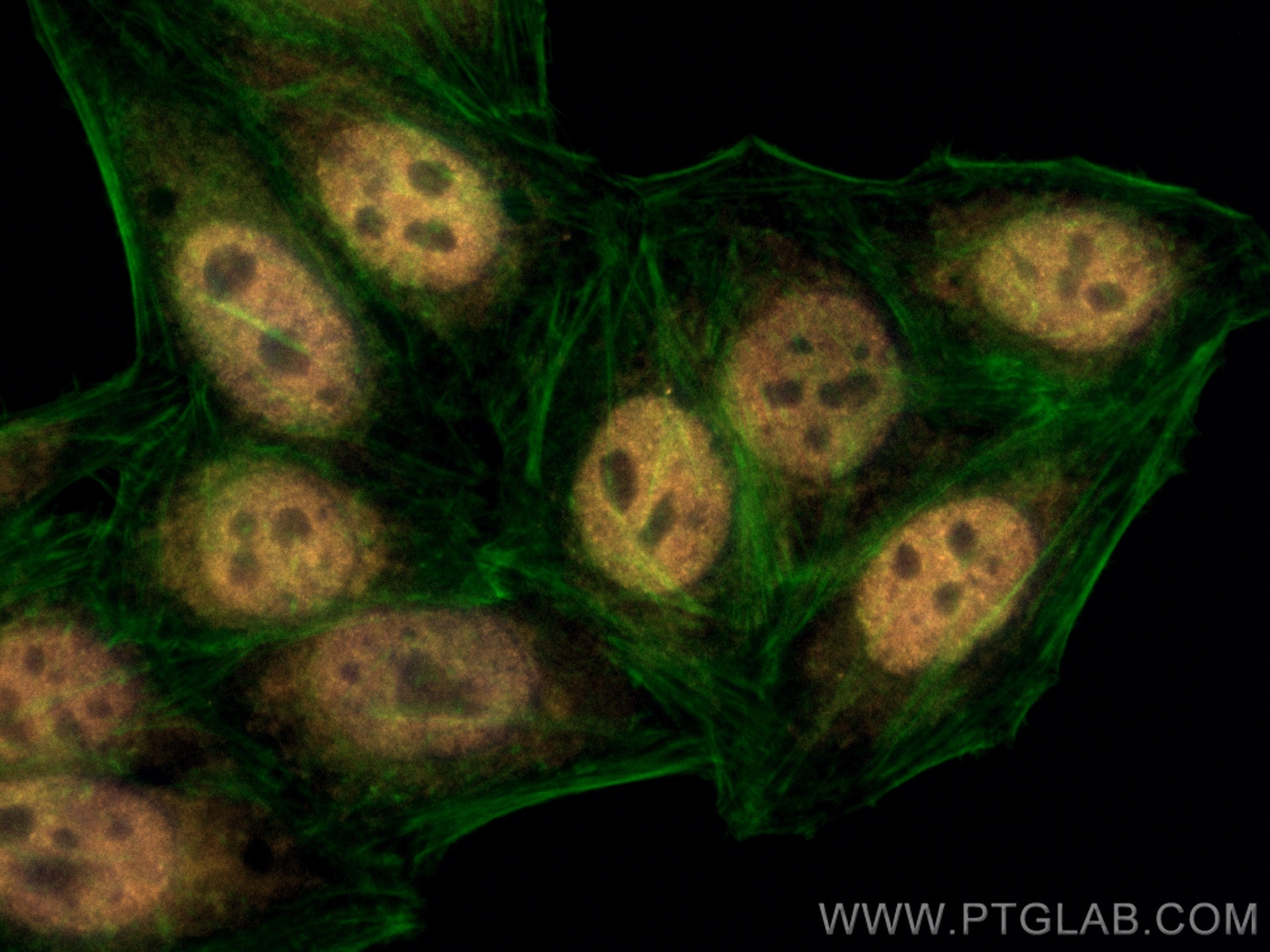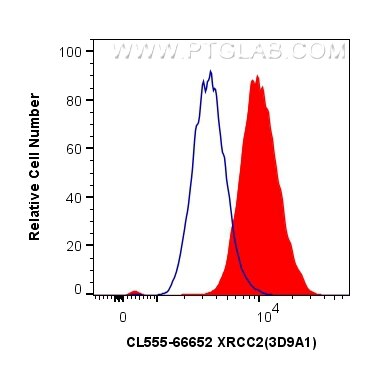Tested Applications
| Positive IF/ICC detected in | HepG2 cells |
| Positive FC (Intra) detected in | HepG2 cells |
Recommended dilution
| Application | Dilution |
|---|---|
| Immunofluorescence (IF)/ICC | IF/ICC : 1:50-1:500 |
| Flow Cytometry (FC) (INTRA) | FC (INTRA) : 0.40 ug per 10^6 cells in a 100 µl suspension |
| It is recommended that this reagent should be titrated in each testing system to obtain optimal results. | |
| Sample-dependent, Check data in validation data gallery. | |
Product Information
CL555-66652 targets XRCC2 in IF/ICC, FC (Intra) applications and shows reactivity with human, mouse samples.
| Tested Reactivity | human, mouse |
| Host / Isotype | Mouse / IgG2b |
| Class | Monoclonal |
| Type | Antibody |
| Immunogen |
CatNo: Ag14421 Product name: Recombinant human XRCC2 protein Source: e coli.-derived, PET28a Tag: 6*His Domain: 1-280 aa of BC042137 Sequence: MCSAFHRAESGTELLARLEGRSSLKEIEPNLFADEDSPVHGDILEFHGPEGTGKTEMLYHLTARCILPKSEGGLEVEVLFIDTDYHFDMLRLVTILEHRLSQSSEEIIKYCLGRFFLVYCSSSTHLLLTLYSLESMFCSHPSLCLLILDSLSAFYWIDRVNGGESVNLQESTLRKCSQCLEKLVNDYRLVLFATTQTIMQKASSSSEEPSHASRRLCDVDIDYRPYLCKAWQQLVKHRMFFSKQDDSQSSNQFSLVSRCLKSNSLKKHFFIIGESGVEFC Predict reactive species |
| Full Name | X-ray repair complementing defective repair in Chinese hamster cells 2 |
| Calculated Molecular Weight | 280 aa, 32 kDa |
| Observed Molecular Weight | 32 kDa |
| GenBank Accession Number | BC042137 |
| Gene Symbol | XRCC2 |
| Gene ID (NCBI) | 7516 |
| RRID | AB_3084627 |
| Conjugate | CoraLite®555 Fluorescent Dye |
| Excitation/Emission Maxima Wavelengths | 557 nm / 570 nm |
| Form | Liquid |
| Purification Method | Protein A purification |
| UNIPROT ID | O43543 |
| Storage Buffer | PBS with 50% glycerol, 0.05% Proclin300, 0.5% BSA, pH 7.3. |
| Storage Conditions | Store at -20°C. Avoid exposure to light. Stable for one year after shipment. Aliquoting is unnecessary for -20oC storage. |
Background Information
XRCC2, also named as DNA repair protein XRCC2, is a 280 amino acid protein, which belongs to the RecA family. XRCC2 is involved in the homologous recombination repair (HRR) pathway of double-stranded DNA, thought to repair chromosomal fragmentation, translocations and deletions. XRCC2 is a part of the Rad21 paralog protein complex BCDX2 which acts in the BRCA1-BRCA2-dependent HR pathway.
Protocols
| Product Specific Protocols | |
|---|---|
| FC protocol for CL555 XRCC2 antibody CL555-66652 | Download protocol |
| IF protocol for CL555 XRCC2 antibody CL555-66652 | Download protocol |
| Standard Protocols | |
|---|---|
| Click here to view our Standard Protocols |






